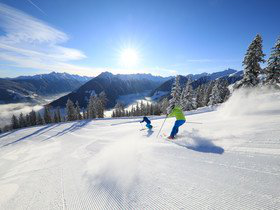Speaker
Description
Understanding the mechanisms of resonance photoproduction is essential for both fundamental and practical reasons. On the one hand the structure of resonances is directly related to basic properties of QCD like the confinement. On the other hand reliable models are badly needed to describe the wealth of the resonance photoproduction data to be expected in near future from JLab, ELSA, MAMI, and SPring-8 experiments. Of particular interest is the photoproduction of $\pi^+\pi^-$ pairs on the proton as for a time being this is the only reaction where the photoproduction of scalar $f_0$ resonances has been observed.
We propose a uniform approach which enabled us to simultaneously describe the photoproduction of resonances in low partial waves $S$, $P$ and $D$ [1]. In our approach the photoproduction amplitude consists of two modes, the long range mode - dominated by one pion exchange and the short range mode which collectively includes contributions related to singularities located far away from the physical region. To describe the long rage mode we have combined the Deck model with SAID parametrisation of the $\pi p$ scattering amplitude. Such approach makes the description of the long range mode essentially parameter free. The short range mode, which includes eg. the exchange of heavier mesons and quark/gluon processes can be parametrized in terms of smooth functions. In this respect we have chosen the 1-st order polynomials in $\pi\pi$ invariant mass. The coefficients of these polynomials were then fitted to experimental mass distributions.
This way we have obtained a very good description of $\pi^+\pi^-$ mass distributions for $S$, $P$ and $D$ partial waves, consistent with the fact that they are dominated by resonances $f_0(980)$, $\rho(770)$ and $f_2(1270)$, respectively. Moreover, we have found that strengths of the short range components for the $P$ and $D$ waves are much larger than for the $S$ wave. This is equivalent to saying that $\rho(770)$ and $f_2(1270)$ resonances are photoproduced from the compact source while the $f_0(980)$ from the diffuse source. This in turn is in accord with the expectation that $\rho(770)$ and $f_2(1270)$ are conventional $q\bar{q}$ states while the $f_0(980)$ is a more loosely bound four quark state.
References
[1] Ł. Bibrzycki, P. Bydžovský, R. Kamiński, A.P. Szczepaniak, Phys. Lett. B 789, 287-291 (2019), doi.org/10.1016/j.physletb.2018.12.045




